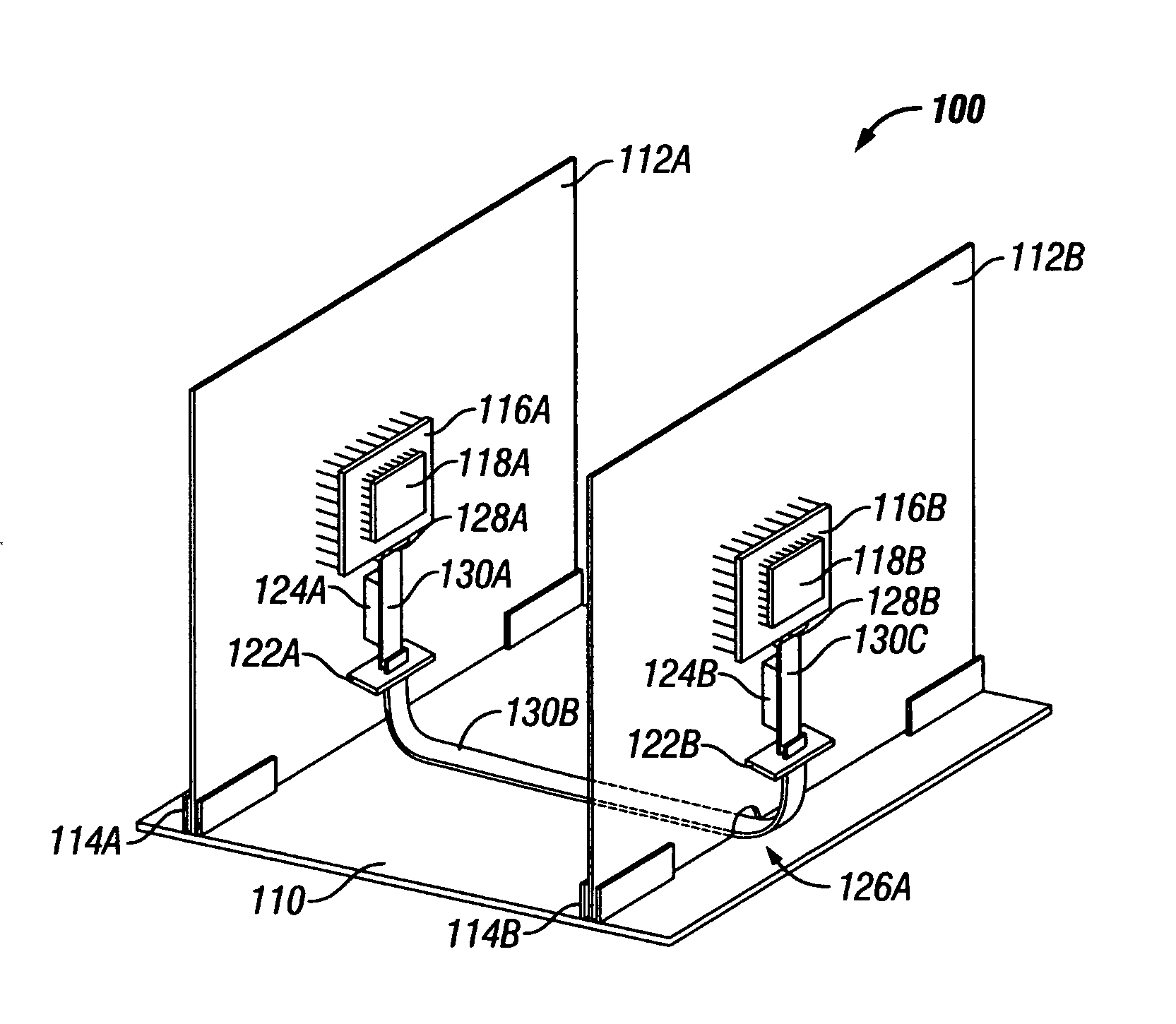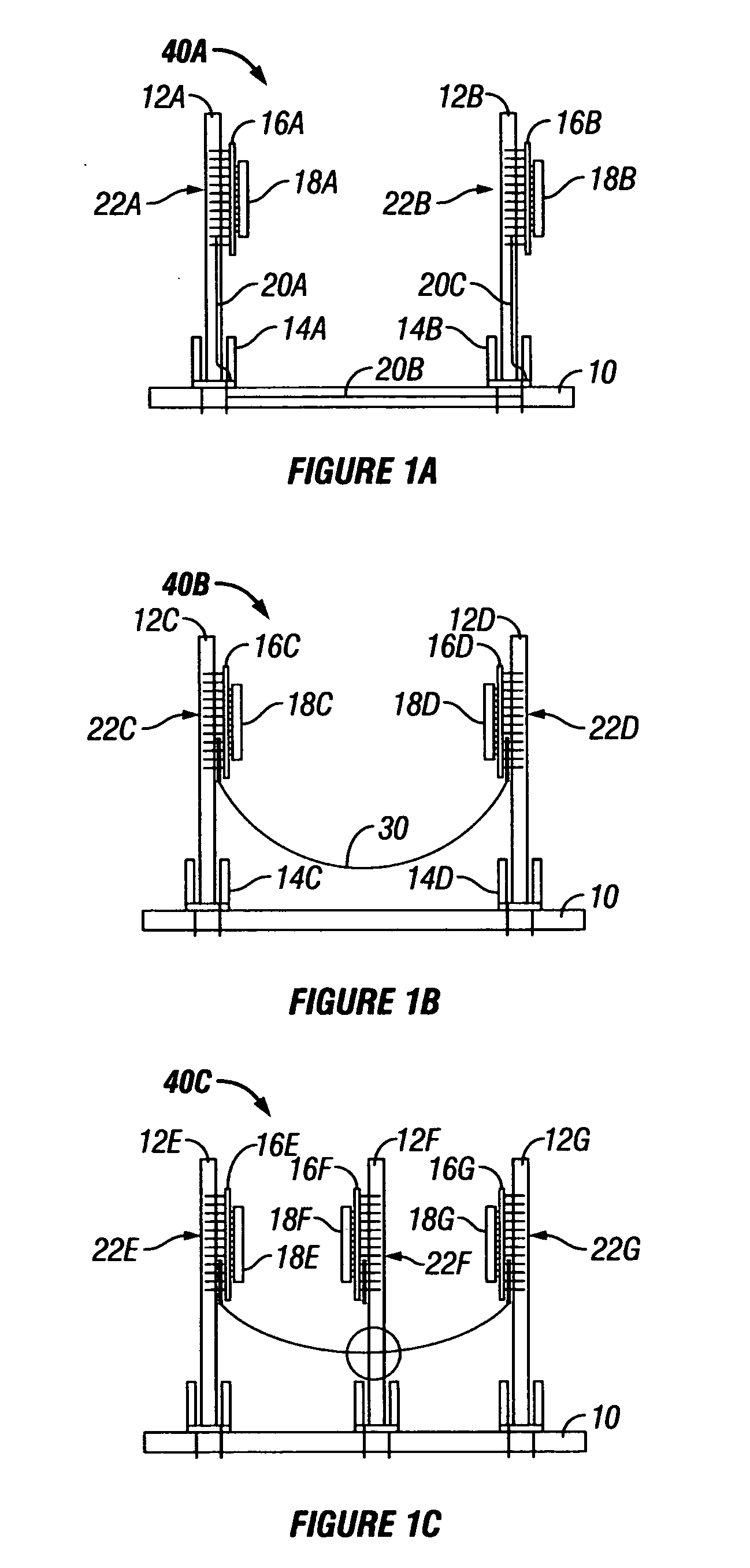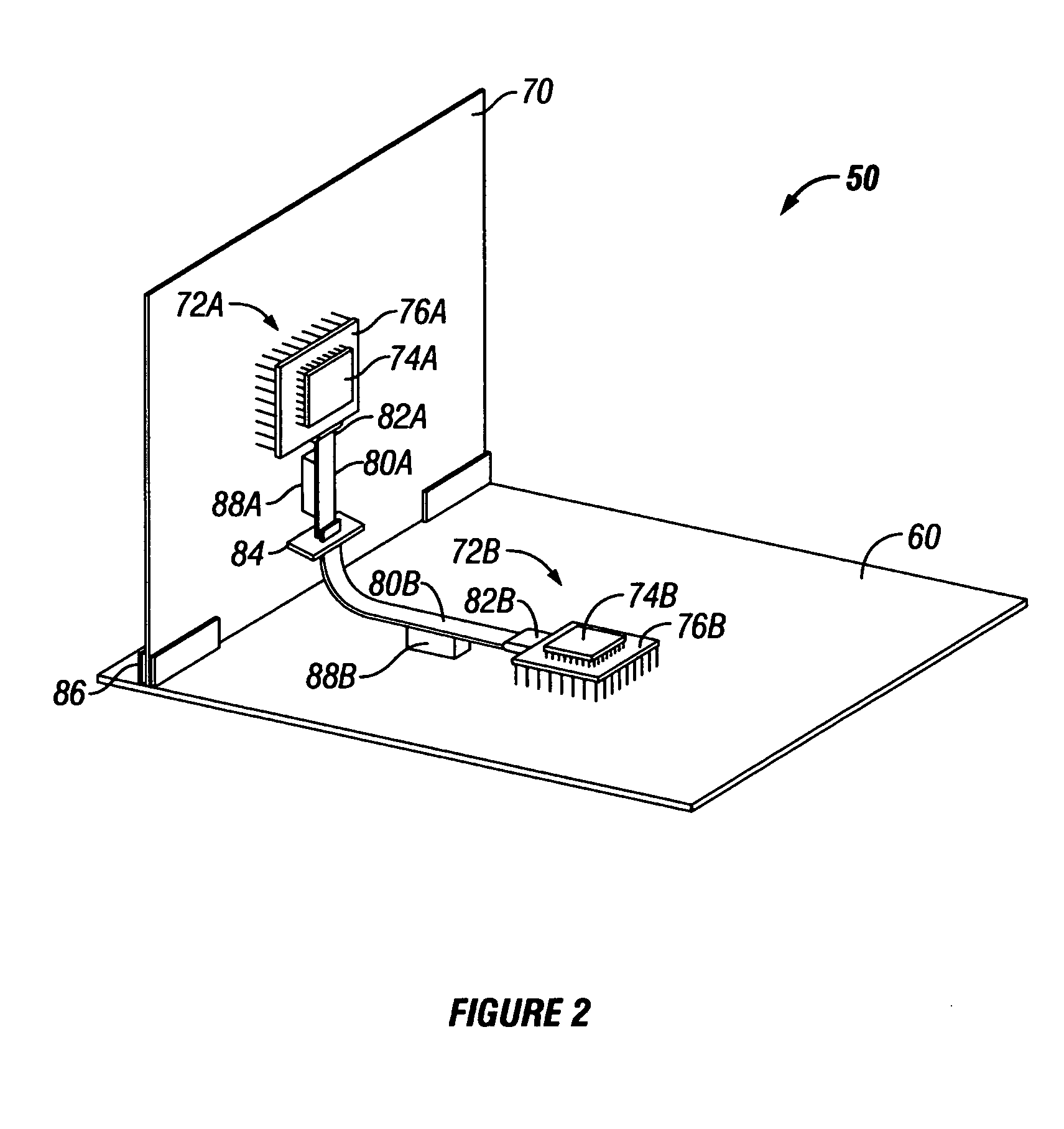Flexible cable for high-speed interconnect
- Summary
- Abstract
- Description
- Claims
- Application Information
AI Technical Summary
Problems solved by technology
Method used
Image
Examples
Embodiment Construction
[0017] In accordance with the embodiments described herein, a system and method are disclosed in which flex cables are affixed to PCBs, for providing high-speed signaling paths between ICs disposed upon the PCBs. The flex cables are fixably attached to the PCBs so as to substantially mimic their structural orientation. Where the configuration includes more than one PCB, the flex cables include multiple portions which are temporarily separable from one another and from the die, using flex-to-flex and flex-to-package connectors, allowing field maintenance of the configuration. By routing the high-speed signals between ICs onto the flex cable, single-layer PCBs can be used for non-critical and power delivery signals, at substantial cost savings. By disposing the flex cables onto the PCB rather than allowing the cables to float freely, the configuration allows thermal air to flow as if the signals were on the PCB and cable routing problems are avoided.
[0018] In the following detailed d...
PUM
| Property | Measurement | Unit |
|---|---|---|
| Speed | aaaaa | aaaaa |
| Adhesivity | aaaaa | aaaaa |
Abstract
Description
Claims
Application Information
 Login to View More
Login to View More - R&D
- Intellectual Property
- Life Sciences
- Materials
- Tech Scout
- Unparalleled Data Quality
- Higher Quality Content
- 60% Fewer Hallucinations
Browse by: Latest US Patents, China's latest patents, Technical Efficacy Thesaurus, Application Domain, Technology Topic, Popular Technical Reports.
© 2025 PatSnap. All rights reserved.Legal|Privacy policy|Modern Slavery Act Transparency Statement|Sitemap|About US| Contact US: help@patsnap.com



